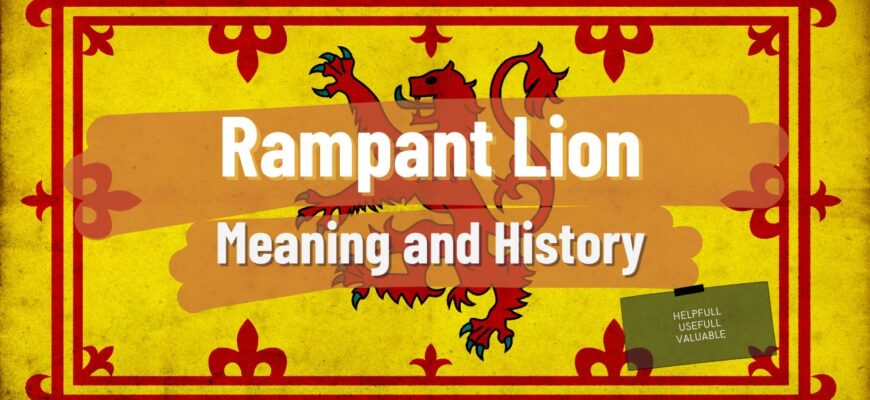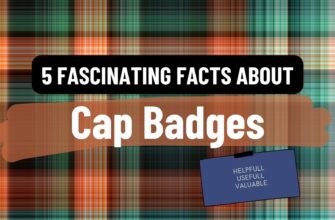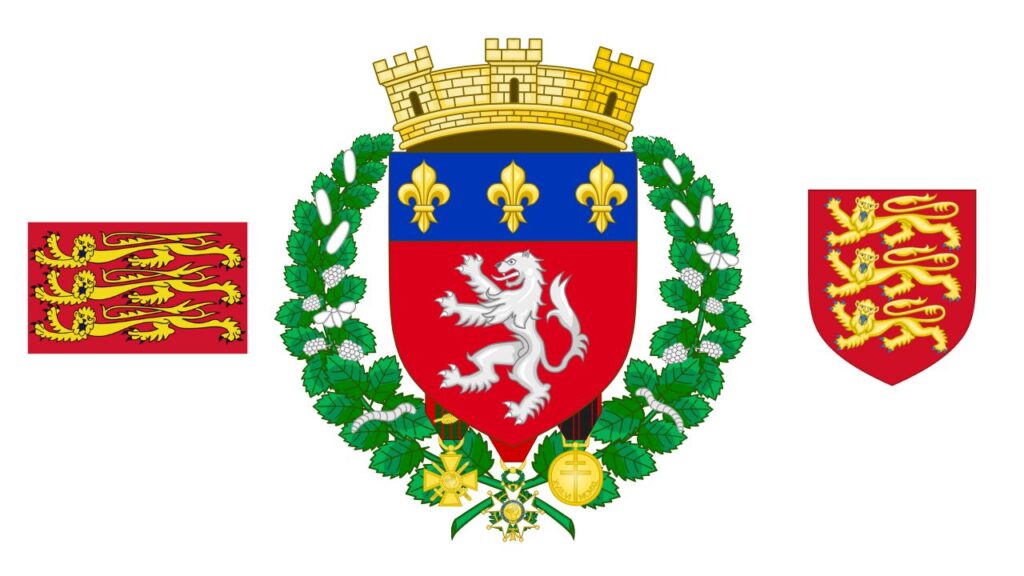
To trace the lion rampant meaning, one must step not into dusty archives, but into the rhythm of Scottish breath. This iconic beast – gold, defiant, claw poised mid-air, has long been stitched into banners, whispered into rebellions, and etched into national pride.
This isn’t just any lion. It’s the red lion on a yellow flag, standing tall, clawed and crowned, roaring from the royal standard of Scotland. In heraldry, “rampant” defines posture, but in the Scottish imagination, it defines spirit.
- Visual features:
- Gold lion on red background, bordered in fleur-de-lis.
- Known as the Scottish royal flag or Royal Banner of Scotland.
- Used as an emblem of monarchy, rebellion, and identity.
- The Heraldic Code: Power, Posture, and Meaning
- What Is the Scottish Flag Called?
- Is the Lion Rampant Flag Illegal?
- The Forgotten Flags: From Battlefields to Misconceptions
- Flags with Lions: A Global Symbol Reimagined
- Scotland’s Flag History: A Tale of Two Lions
- Final Thoughts: The Lion Keeps Roaring
- Where to Find the Lion Rampant Today
The Heraldic Code: Power, Posture, and Meaning

Heraldry isn’t subtle. It’s a language of survival and status. The lion rampant, claws raised, isn’t there to be admired—it’s there to warn. Unlike the lion passant (calm, stepping), the rampant version says: We’re ready. Come if you must.
The rampant animal position isn’t limited to lions, but no other creature has seized the public heart in quite the same way, especially not in Scotland. While you’ll find flags with lions in cultures as varied as England, the Netherlands, or Sri Lanka, none roar quite like this.
- Common heraldic lion positions:
- Rampant – Upright and aggressive.
- Passant – Walking and watchful.
- Couchant – Lying down, passive.
- Sejant – Seated, alert.
What Is the Scottish Flag Called?
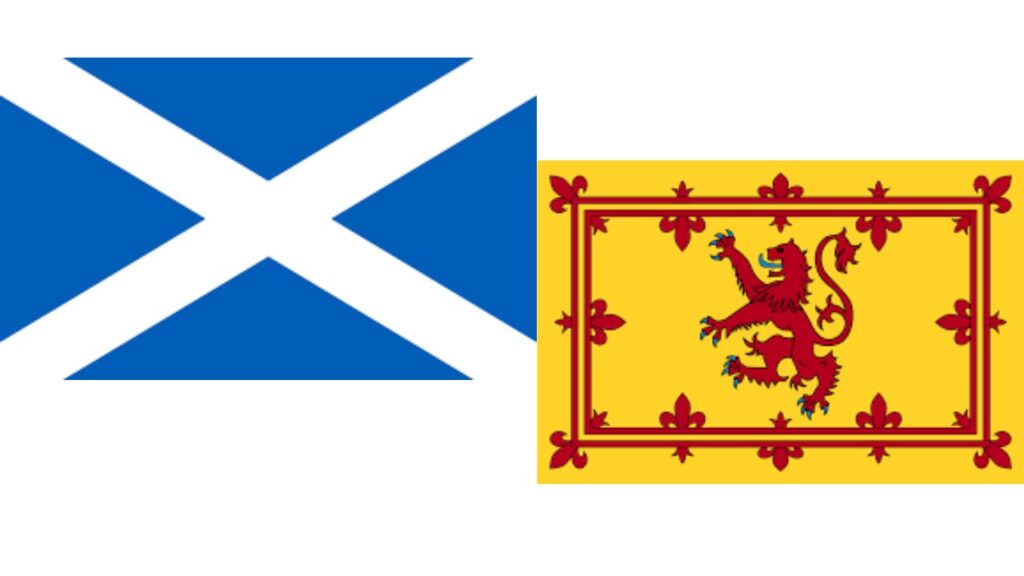
Scotland, curiously, has two national flags. The blue-and-white Saltire (St. Andrew’s Cross) is the official national flag – a crisp, humble X against a sky-blue field. It’s the one flying over Parliament buildings and in international diplomacy.
The other is the lion rampant flag, also called the Royal Standard of Scotland. This is the red lion against a yellow field, edged in red. It’s used more often in cultural contexts than political ones, and though it’s technically not the Scottish national flag, it often feels more personal.
- Flag glossary:
- Saltire: Blue flag with a white diagonal cross.
- Royal Banner: Yellow flag with a red lion rampant.
- Scottish lion flag: Colloquial term encompassing both.
Is the Lion Rampant Flag Illegal?
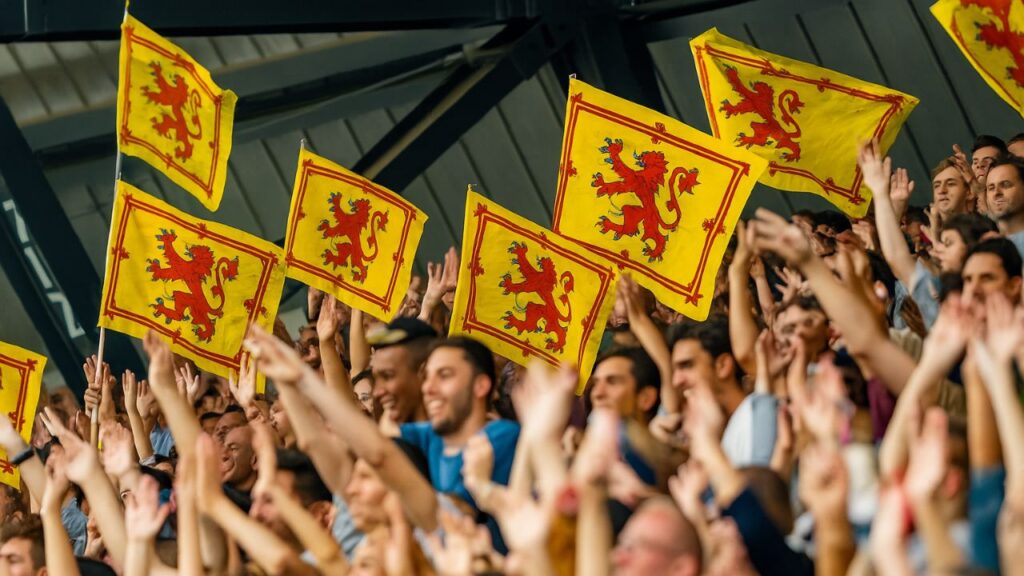
Here’s the twist. That cherished red and yellow flag with a lion? It’s technically reserved for royal use. The Royal Banner of Scotland, or the Scottish royal standard, may only be flown by the monarch or approved representatives. So, yes, why is the lion rampant illegal? Because royal protocols still bind it.
That said, it’s everywhere: on mugs, jerseys, even tattoos of the lion crest. Most Scots know it’s “not technically allowed” and fly it anyway, with defiant pride.
- Legality insights:
- The Royal Banner is protected under the Act of Parliament.
- Unauthorized use isn’t criminal, but it’s discouraged.
- Enforcement is almost nonexistent—passion wins.
The Forgotten Flags: From Battlefields to Misconceptions
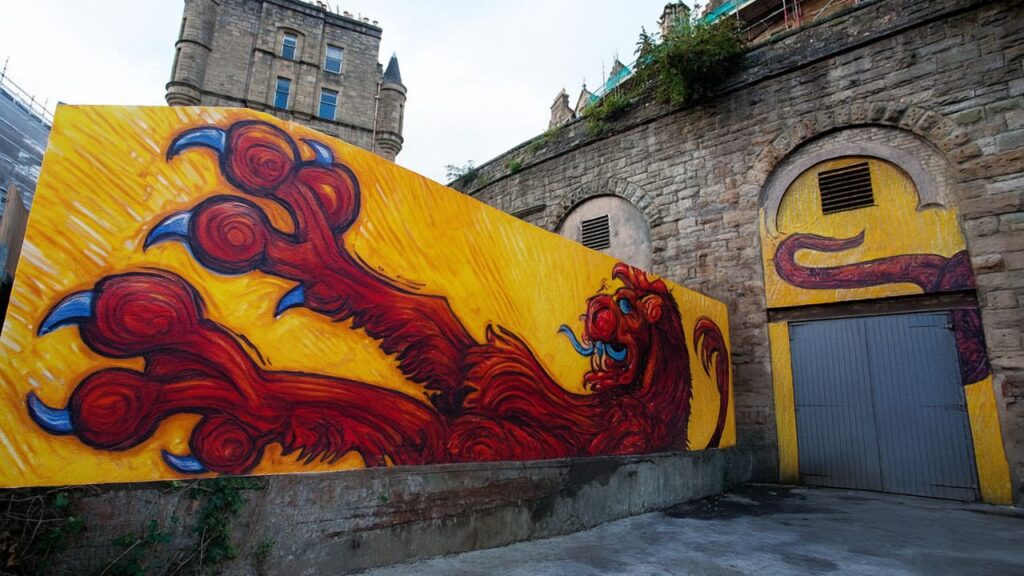
Some confuse the Scottish battle flag with the lion rampant. But during the wars of independence, the Saltire flew into combat, while the lion flag embodied sovereign claim. Other misunderstandings are more modern: search engines are full of queries like “Does Scotland have a flag?” or “What is the Scotch flag?”—which speaks to branding more than history.
There’s even talk of a Scottish dragon flag, but that belongs more to myth than statehood. Still, the mix of symbols tells us something: Scotland’s identity isn’t contained in one banner—it’s a tapestry.
- Common confusions:
- “Scotch flag” = incorrect term; “Scottish flag” is correct.
- “Scottish dragon” = no official flag, but exists in folklore.
- “Blue flag with lion” = may refer to other nations (e.g., Dutch or Luxembourg).
Flags with Lions: A Global Symbol Reimagined
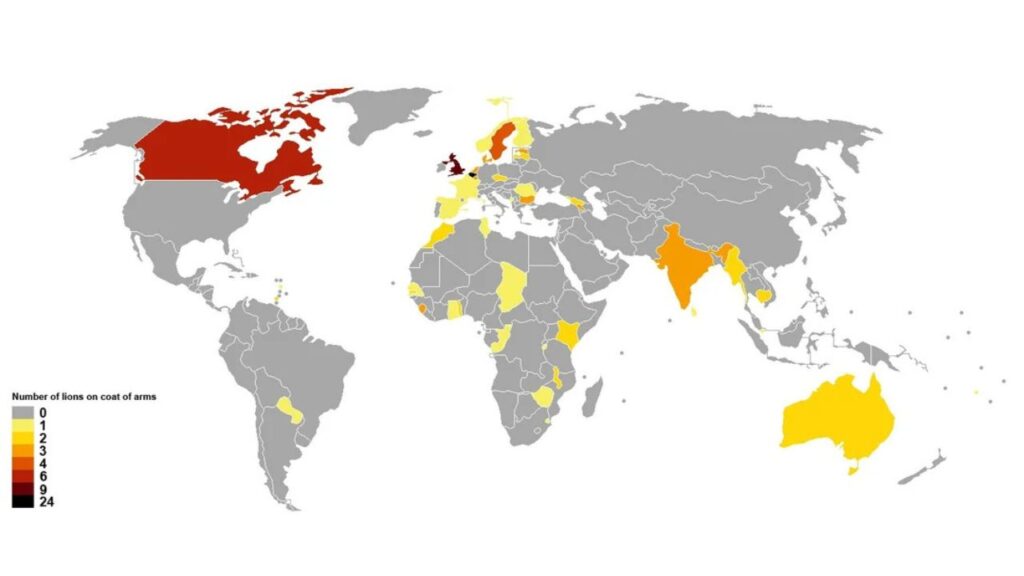
World map nations with lions in their flags or crests.
The lion rampant isn’t uniquely Scottish. From Persia to the Netherlands, flags with a lion on them have long suggested strength, royalty, or divinity. The Dutch lion meaning, for example, relates to independence and resilience, fitting, given the nation’s struggle against foreign rule.
In comparison, Scotland’s lion stands less for conquest and more for resistance. It’s a battle standard, yes—but also a personal crest. And that’s what gives the Scottish lion meaning its distinctive emotional punch.
- Other lion-bearing flags:
- Dutch Republic – Lion with sword and arrows.
- England – Three lions passant (Plantagenet crest).
- Sri Lanka – Sword-bearing lion (Sinhala heritage).
Scotland’s Flag History: A Tale of Two Lions

The Scotland flag history is older than some kingdoms. The Saltire dates back to the 9th century and is linked to a miraculous victory under Saint Andrew’s sign. The lion rampant appears later, in the 12th century, with King William I, nicknamed the Lion not for temperament, but for the new emblem on his royal seal.
As the Scottish throne evolved, so too did its symbols. From red lion yellow flag to battle-worn Saltires, Scotland’s identity was forged not just in blood, but in banners.
- Timeline:
- 832: Saltire legend at the Battle of Athelstaneford.
- 1165–1214: William I adopts the lion rampant.
- 1603: Lion rampant absorbed into British royal arms after the Union of Crowns.
Final Thoughts: The Lion Keeps Roaring
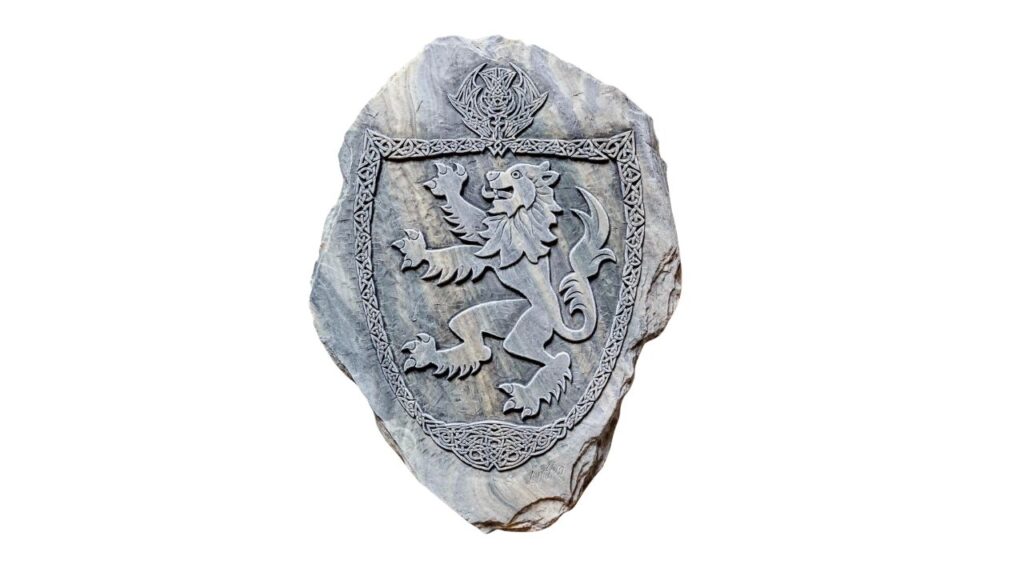
So, what does the Scottish flag represent? The Saltire whispers of divine protection. The lion rampant, meanwhile, roars of earthly power and eternal defiance. One is humble. The other, unrelenting. Together, they form the beating heart of a nation proud of its past and unafraid of its future.
Whether you see it stitched on a kilt, waved above a stadium, or faded on a stone wall, the lion rampant isn’t just an emblem. It’s memory. It’s rebellion. And for millions, it’s home.
Where to Find the Lion Rampant Today
The legacy of the Scottish lion rampant lives on—not just in flags and stonework, but in finely crafted pieces of heritage. If you’re looking to own a piece of this enduring symbol, explore our curated Rampant Lion collection featuring authentic Scottish designs that echo centuries of pride and history.
